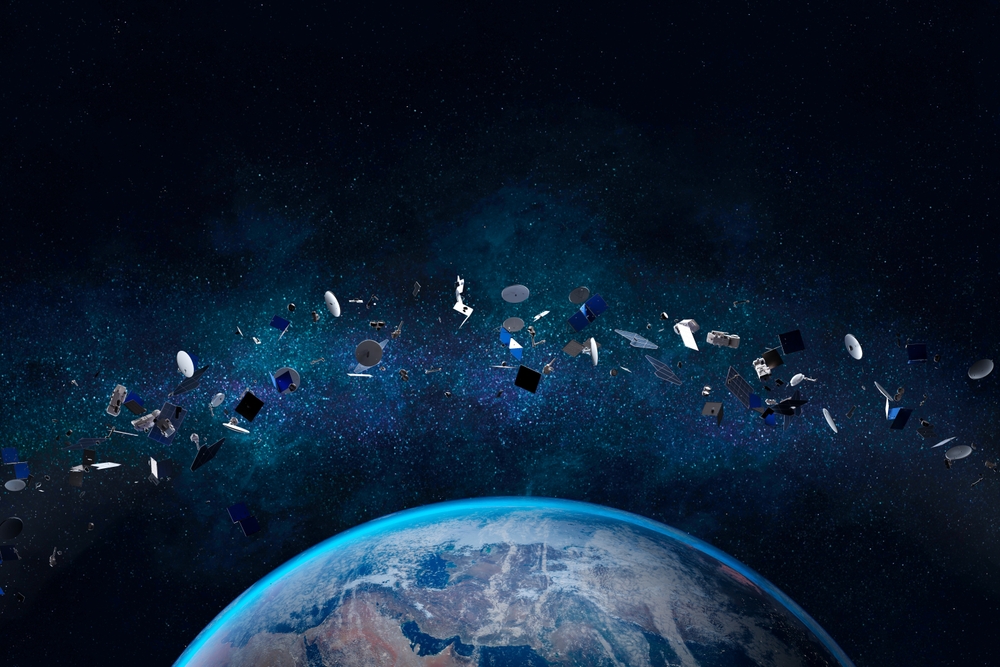
Space Junk Is Falling in Airplane Flight Paths, but Chances of Impact Is Low
www.discovermagazine.com
Air traffic controllers now have something new to worry about: space junk. A report warns the risk of parts left over from a launch rocket or other debris plummeting into global flight paths is now 26 percent a year, according to a report in the journal Nature.While the chance of debris hitting an aircraft is low, its presence in flight paths could still pose a big enough risk that routes will need to be altered inconveniencing passengers. Such disruptions are not unheard of. In 2022, a 20-ton chunk of rocket re-entering Earths atmosphere prompted Spanish and French aviation authorities to close parts of their airspace.With launches increasing every year, so too, do the risks of junk plummeting to Earth. While the risk of hitting someone on the ground remains at a relatively low 3 percent, more frequent launches confer more risks.Increasingly Crowded SpaceThere are really two categories to consider: junk that falls to Earth shortly after a launch, or debris that hails down after years in orbit. This is an important distinction, because monitoring and controlling the debris is different in each of those scenarios.The first scenario, while no less alarming, is easier to manage, says Ewan Wright, a graduate student at the University of British Columbia and an author of the study. He points to the recent explosion of a SpaceX rocket shortly after launch. Aviation officials were quickly able to close down the affected airspace.This is not so easy when something thats been in orbit for years heeds the call of Earths gravity. There is little warning about when that could happen, and even less ability to monitor its descent.The numbers fueling the report indicate that these potential scenarios are growing. In 2024, there were 258 successful rocket launches, and 120 uncontrolled rocket debris re-entries, with more than 2,300 rocket bodies in orbit. Meanwhile air passenger numbers are anticipated to grow by 7 percent this year.Dealing with the first scenario debris falling shortly after launch is theoretically easier. Rocket stages equipped with thrusters could be fired up for controlled re-entry. That happens with some, but not all, launches.Leveling the Playing FieldThe reason why now more launches arent managed that way comes down to both money and regulation. It costs more to create a controlled re-entry. Many rockets now carry satellites from both commercial interests and the military. Neither is keen to foot the extra costs. Also, like managing the amount of space junk, there are no binding, enforceable agreements.International terms would even the competitive playing field. If one country brings in new rules, that would disadvantage the competitors, says Wright.Debris that suddenly fall to Earth from orbit is harder to monitor and control especially since the debris is falling at 5 to 6 miles per second. Its difficult to predict reentry, says Wright. If you are off a bit, it could hit a different country or continent than the one youve predicted.Air traffic controllers shouldnt have to make snap judgments about what parts of the airspace they need to close off for these events, according to Aaron Boley, a UBC professor and co-author of the study. Uncontrolled rocket body re-entries are a design choice, not a necessity, Boley, said in a press release. The space industry is effectively exporting its risk to airlines and passengers.The authors biggest concern is that, although each chance of a single incident is small, as launches increase and satellites accumulate in orbit, the odds for catastrophe will climb. Uniform regulations and monitoring globally could minimize the chances of injury or death from space debris.We need to push for a change before someone gets hurt," says Wright.Article SourcesOur writers at Discovermagazine.com use peer-reviewed studies and high-quality sources for our articles, and our editors review for scientific accuracy and editorial standards. Review the sources used below for this article:Nature. Airspace closures due to reentering space objectsBefore joining Discover Magazine, Paul Smaglik spent over 20 years as a science journalist, specializing in U.S. life science policy and global scientific career issues. He began his career in newspapers, but switched to scientific magazines. His work has appeared in publications including Science News, Science, Nature, and Scientific American.
0 التعليقات
·0 المشاركات
·57 مشاهدة


